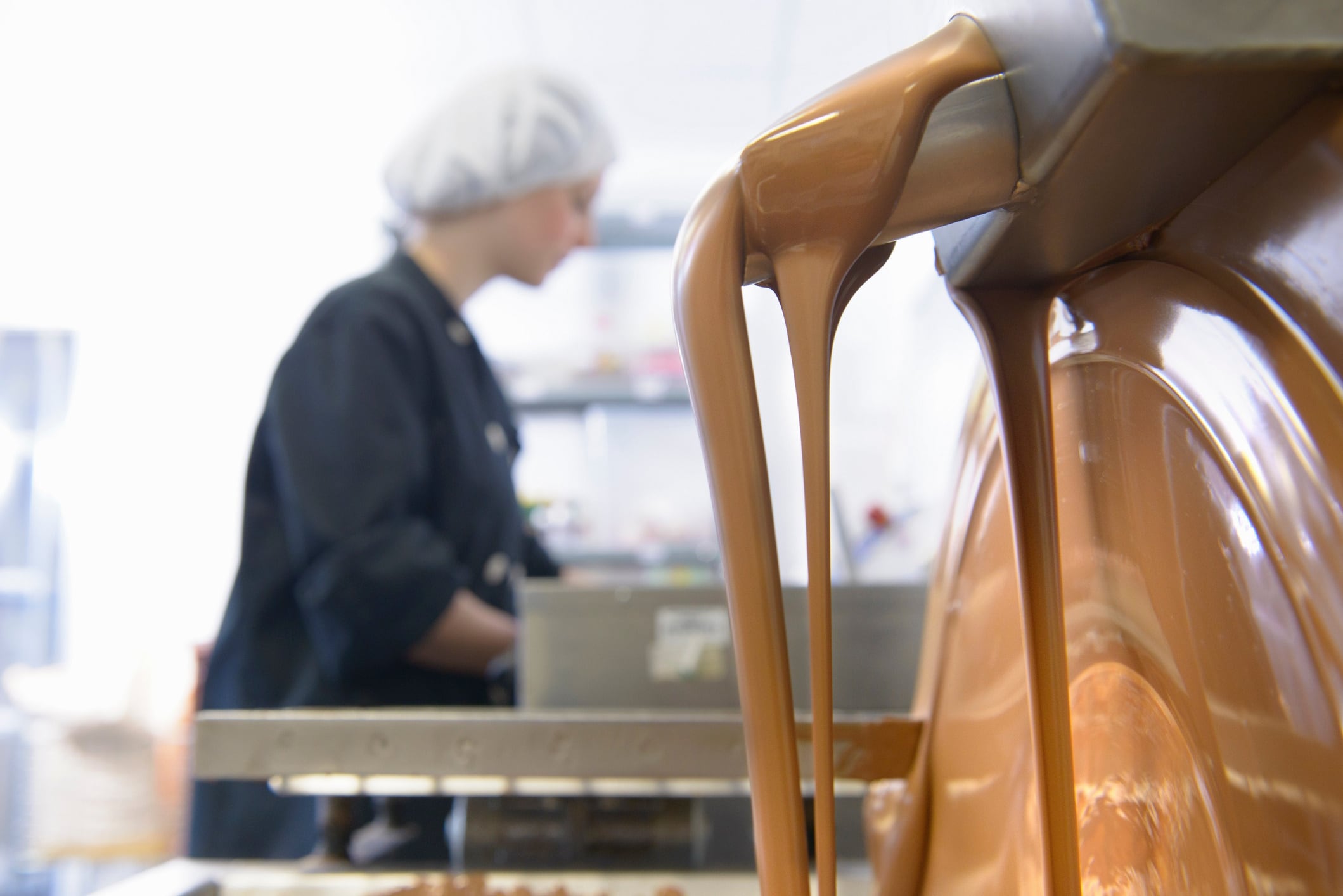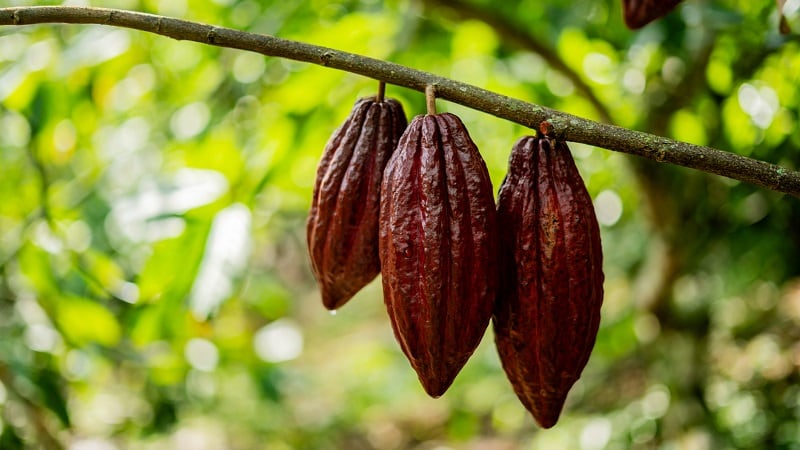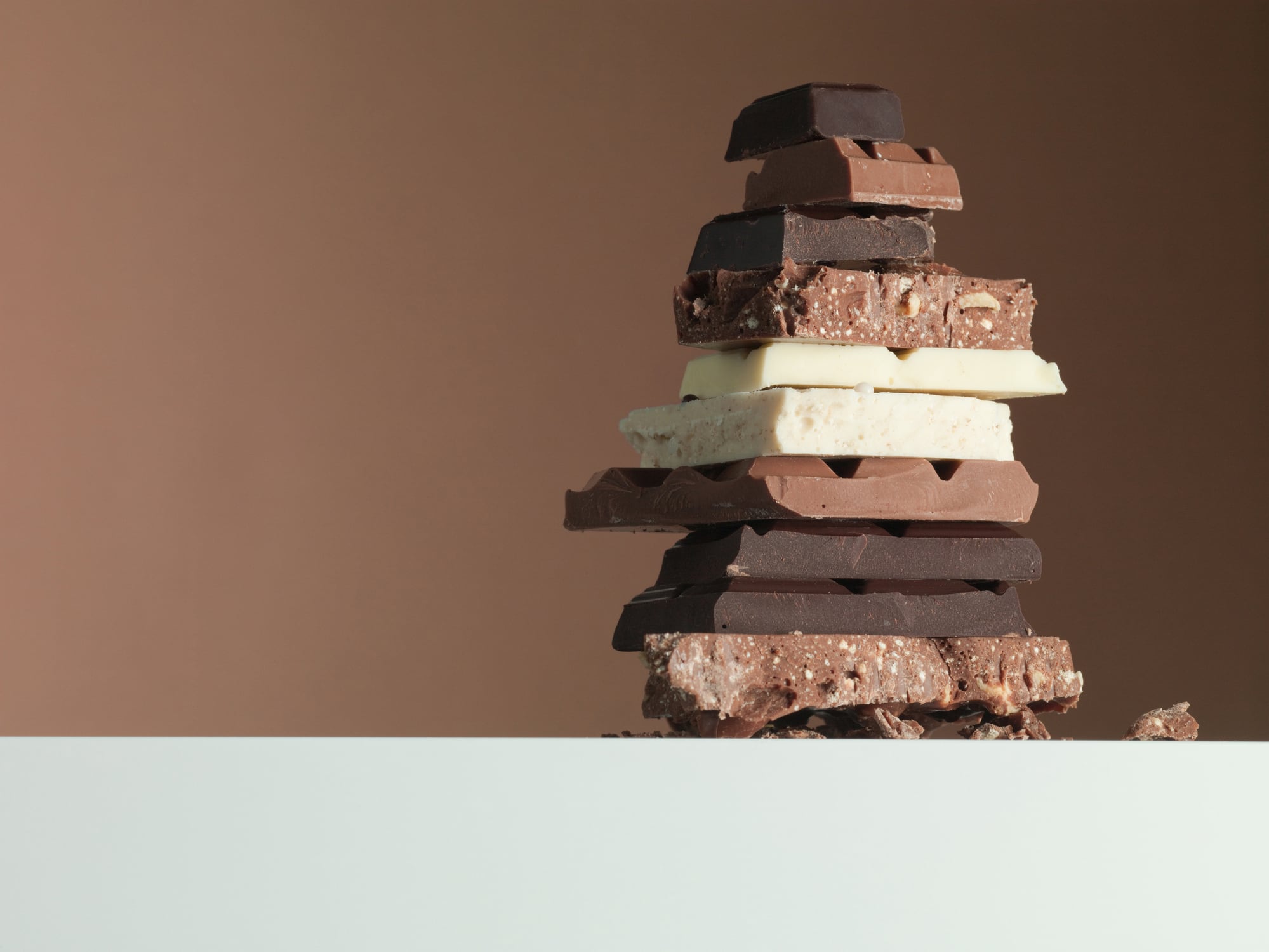Key insights:
- Nine microbes identified as the drivers of fine-flavor chocolate.
- Industrial chocolate for bakery, snacks and confectionery expected to reach $93.2 billion by 2034.
- Microbial control promises consistency, cost savings, and new flavor innovation.
Chocolate has always been marketed as a luxury, but its flavor is born out of something far less glamorous: a bubbling, unpredictable pile of fermenting beans. Farmers cut open cacao pods, heap the sticky seeds into wooden boxes or banana-leaf mounds and let nature take over. The resulting mix of heat, microbes and time is what transforms raw seeds into the building blocks of fine chocolate.
For centuries, this step has been left largely to chance. Different farms, different microbes, different results. That’s why a bar from Venezuela might deliver roasted-nut richness while one from Trinidad leans toward a wine-like tang.
“Skip fermentation and chocolate tastes like cardboard plants,” said Dr David Gopaulchan, lead author and an international research fellow at the University of Nottingham. “Get it right, and you unlock the magic.”
Now, Dr Gopaulchan and his colleagues believe they’ve bottled that magic.
Their study, published in Nature Microbiology, shows how a carefully selected cast of just nine microbes can reproduce the complex flavor signatures usually reserved for premium chocolate.
How lab microbes recreated cocoa’s complexity

The researchers worked with three farms in Colombia: Santander, known for bright berry notes; Huila, often floral; and Antioquia, where beans tend to slip into bulk-market bitterness.
They sequenced the microbial communities at each site, tracked temperature and pH shifts, and modeled which organisms drove key reactions.
The surprise wasn’t that microbes mattered – farmers have long suspected this – but that such a small group of them held the keys. Yeasts such as Saccharomyces and bacteria like Lactobacillus and Acetobacter proved to be the real architects. When these strains were inoculated into sterile beans back in Nottingham, the resulting cocoa ‘liquor’ fooled trained tasting panels. Santander and Huila profiles could be recreated in the lab, right down to their fruity, floral overtones. Antioquia’s duller flavor, by contrast, reflected its weaker microbial mix.
“We’ve found the secret sauce,” said Prof David Salt, co-senior author and director of Nottingham’s Future Food Beacon. “Once you know which microbes drive which flavor notes, you can dial them up or down. That means not only replicating premium cocoa but, potentially, inventing flavors nobody’s ever tasted in chocolate before.”
“We’ve seen flavors heading toward cheese or even meat,” added Dr Gopaulchan. “You might not want those in chocolate, but it shows the palette is far wider than anyone realized.”
The business case for microbial chocolate

For the chocolate industry, which spans indulgent confectionery bars and utilitarian bakery chips, the implications are hard to ignore. Industrial chocolate used in bakery, snacks and confectionery was valued at around $60.6 billion in 2024 and is projected to top $93.2 billion by 2034, according to Market.us. Within that, real and compound chocolate segments are expanding steadily – compound alone is forecast to hit $44.1 billion by 2034.
The bigger picture is the global confectionery market, which is expected to grow from roughly $284 billion in 2025 to $468 billion by 2034. That’s a lot of cocoa and right now, it’s painfully expensive. Futures climbed past $10,000 a ton this year, more than double 2023 levels. Poor weather in West Africa and crop disease have shrunk supplies, forcing processors and manufacturers into damage control.
That’s where microbial consistency matters. If you can coax stronger flavor from fewer beans, you stretch supply.
Prof Salt framed it this way: “If farmers nurture the right microbes, their beans taste better, fuller. Manufacturers then don’t need as much cocoa to hit the same flavor profile. In a market this volatile, that kind of efficiency can save a business.”
This development is a major advantage for manufacturers, ensuring every bar delivers the same flavor profile, batch after batch. But the flip side is that the very quirks and variations that give artisanal chocolate its character could be ironed out in the process – a classic tension between uniformity and individuality.
For mass confectionery producers, though, character is often less important than predictability. A Hershey’s bar in Pennsylvania must taste like a Hershey’s bar in São Paulo. “Variation is the enemy of scale,” as Dr Gopaulchan put it. With microbial starters, variation can be ironed out.
From wine notes to wild new flavors

Not every use case is about making chocolate taste the same. The same microbial toolbox could allow premium chocolatiers to ‘design’ entirely new profiles: citrus-forward couverture for pastry chefs, spice-tinged inclusions for snack bars or berry-bright chocolate chips that need no artificial flavorings.
For farmers, microbial starters might mean fewer failed fermentations in unpredictable weather, helping them fetch higher prices.
For innovators, it could spark a wave of ‘designer chocolate’ products, advertised much like craft beers or specialty coffees – each with its own microbial story.
“Ultimately, it gives us choice,” Prof Salt said. “We don’t have to accept whatever microbes the wind blows into a box of beans. We can steer fermentation, protect farmer incomes and expand what chocolate can be.”
The benefits of 'industrial' chocolate
Consistent flavor: Fewer batch-to-batch variations.
Greater flavor impact: Less cocoa required for the same sensory punch.
Creative natural profiles: Fruity, floral, or spicy notes without additives.
Supply chain resilience: Reduced risk from failed fermentations.
Cost control: Better margins in a volatile cocoa market.
Clean-label advantage: Flavor driven by microbes, not chemicals.
Sustainability edge: Supports farmer incomes by stabilizing quality.
Chocolate enters its experimental era

Chocolate has reinvented itself before: the industrial boom of the 19th century, the rise of milk chocolate, the craft bean-to-bar movement. This time, the revolution isn’t in the roasting drum or the marketing department. It’s in a petri dish.
The microbial insights from Nottingham suggest that chocolate’s next act could be both more controlled and more creative.
Manufacturers facing record cocoa prices will eye cost savings, while premium players may chase new, never-before-tasted notes. Consumers, meanwhile, might soon be choosing between a floral bar ‘fermented with yeast X’ or a fruity one ‘driven by bacteria Y’.
It’s an experimental era and the world’s most beloved treat is suddenly open to flavors we never imagined.
Study:
Gopaulchan, D., Moore, C., Ali, N.et al. A defined microbial community reproduces attributes of fine flavour chocolate fermentation. Nat Microbiol(2025). https://doi.org/10.1038/s41564-025-02077-6


